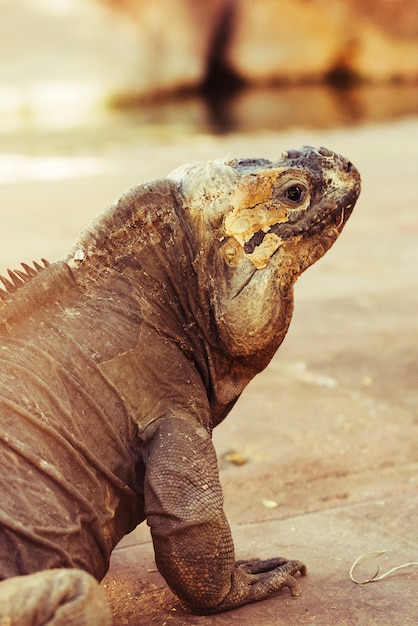Discover Fascinating Facts About Komodo Dragons

Komodo dragons are the largest lizards in the world.
These incredible creatures can grow up to 10 feet long.
Komodo dragons have razor-sharp teeth that can tear through flesh.
They are skilled hunters and can take down prey as large as water buffalo.
Despite their fierce appearance, komodo dragons are excellent swimmers.
Komodo dragons have venomous saliva that helps to bring down their prey.
They have a unique hunting strategy where they bite their prey and then follow it until it succumbs to the venom.
Komodo dragons have a strong sense of smell and can detect dead animals from up to six miles away.
These lizards have a forked tongue that helps them to sense their surroundings better.
Komodo dragons have a keen sense of hearing and can pick up even the slightest sounds.
Females are usually larger than males when it comes to komodo dragons.
Some researchers suggest that komodo dragons may have a primitive form of venom that affects blood clotting and causes shock in their prey.
The saliva of komodo dragons contains over 50 different strains of bacteria, making their bite even more deadly.
Komodo dragons have a unique reproductive system where females can reproduce without a male (parthenogenesis).
Baby komodo dragons are incredibly small, measuring less than two feet long.
These lizards have a relatively low metabolic rate, allowing them to survive on only a few meals each month.
Discover Fascinating Facts About Komodo Dragons part 2
Komodo dragons are native to the Indonesian islands of Komodo, Rinca, Flores, Gili Motang, and Padar.
They have existed for millions of years and are considered living fossils.
Komodo dragons have a forked tongue that helps them detect prey by tasting the air.
These lizards have incredible camouflage abilities that allow them to blend into their surroundings.
Komodo dragons can consume up to 80% of their body weight in one meal, thanks to their elastic stomachs.
They have sharp claws that help them to grip and tear apart their prey.
Despite being solitary creatures, komodo dragons can live in close proximity to one another without conflict.
These lizards can run at speeds of up to 13 miles per hour in short bursts.
Komodo dragons have a lifespan of around 30 years in the wild.
They have poor eyesight, relying more on their other senses to hunt and survive.
Komodo dragons have a unique sense organ in their snouts called the Jacobson’s organ, which helps them to detect prey.
These lizards have a highly efficient cardiovascular system that allows them to maintain their activity levels for extended periods.
Komodo dragons have a preferred temperature range between 30-35 degrees Celsius (86-95 degrees Fahrenheit).
They have a specialized tooth in the back of their mouth called the V shaped serrated tooth, which helps them to slice through their prey.
Komodo dragons have a powerful bite force that can exert pressures of up to 300 pounds per square inch.
These lizards have a scavenging behavior, feeding on carrion when there is a scarcity of prey.
Komodo dragons have been known to cannibalize their own species, especially younger individuals.
Their skin is covered in small, bony plates called osteoderms, which provide protection.
Komodo dragons have a characteristic forked tail that allows them to swim more efficiently.
These lizards have a relatively low success rate in hunting, with only about 10% of their hunts resulting in a successful kill.
Komodo dragons have a strong immune system that allows them to survive even when injured or infected.
They possess a keen sense of balance, making it easier for them to navigate rocky or uneven terrain.
Komodo dragons have been observed engaging in play behaviors, such as wrestling with one another.
These lizards have a dominant jaw that can create a strong grip, making it difficult for prey to escape.
Komodo dragons are apex predators, meaning they have no natural predators in their habitat.
They are territorial animals and use scent marking to establish boundaries.
Komodo dragons have a vomeronasal organ in their mouth that helps them to detect chemical signals from their environment.
These lizards have a complex social structure that involves dominance hierarchies among males.
Komodo dragons have a powerful tail that they can use as a weapon, potentially causing serious injury to attackers.